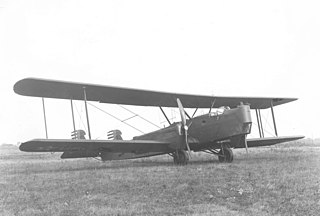
The Huff-Daland XB-1 was a prototype bomber aircraft built for the United States Army Air Corps.

The Keystone B-5 is a light bomber made by the Keystone Aircraft company for the United States Army Air Corps in the early 1930s. The B-5A was a Keystone B-3A with Wright Cyclone rather than Pratt & Whitney engines.

The Ader Éole, also called Avion, was an early steam-powered aircraft developed by Clément Ader in the 1890s and named after the Greco-Roman wind god Aeolus.
The Douglas XB-31 was the design submitted by Douglas after the request by the United States Army Air Forces for a very heavy bomber aircraft, the same request that led to the Boeing B-29 Superfortress, Lockheed XB-30, and Consolidated B-32 Dominator.
The Martin XB-33 Super Marauder was a proposed World War II American bomber aircraft. It was designed by the Glenn L. Martin Company as the Martin Model 190 and was a high-altitude derivative of the company's B-26 Marauder. Two different designs were developed, first as a twin-engined aircraft and then as a four-engined aircraft. The four-engined version was ordered by the United States Army Air Forces, but the program was cancelled before any aircraft were built.

The Curtiss-Wright X-19, company designation Model 200, was an American experimental tiltrotor aircraft of the early 1960s. It was noteworthy for being the last aircraft of any kind manufactured by Curtiss-Wright.

The Boeing B-1 was a small biplane flying boat designed by William Boeing shortly after World War I.

The Douglas T2D was an American twin-engined torpedo bomber contracted by the military, and required to be usable on wheels or floats, and operating from aircraft carriers. It was the first twin-engined aircraft to be operated from an aircraft carrier.

The Bleriot-SPAD S.51 was a French fighter aircraft developed in 1924 in response to a French Air Force requirement for an aircraft to replace their obsolete Nieuport-Delage NiD.29s.
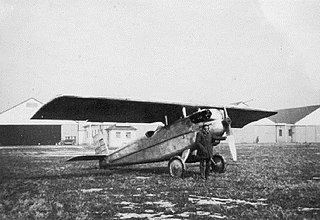
The Dornier Do H Falke was a German single-seat fighter, designed by Claude Dornier and built by Dornier Flugzeugwerke. Although an advanced design for its time, being evaluated by the United States Navy as the Wright WP-1, it did not go into production.

The PWS-21 was a Polish passenger aircraft for 4 passengers, built in PWS factory in 1930, that remained a prototype.
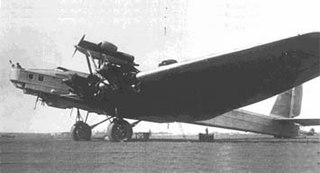
The Tupolev ANT-16 was an experimental heavy bomber aircraft designed and tested in the Soviet Union in the early 1930s.
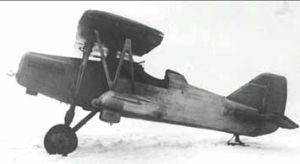
The Tupolev I-8 was an experimental interceptor built in the Soviet Union in the early 1930s.

The Orenco D was an American biplane fighter aircraft, designed by Orenco and built by Curtiss Aeroplane and Motor Company. It was the first fighter type of completely indigenous design to enter US military service.

The Boeing Model 6D, a.k.a. Boeing Model 6E, Boeing B-1D and Boeing B-1E, was an American pusher biplane flying-boat built by Boeing between 1928 and 1929.
The Hy-Tek Hurricane 103 is a family of single-engined, high wing tricycle gear-equipped aircraft that were available in kit form from Hy-Tek Hurricane of Aurora, Oregon.

The Wright Model D was built to sell to the United States Army for an observation aircraft. It was similar in design to the Wright Model R with a 6-60 motor. The Model D could fly 66.9 mph and climb 525 feet per minute, but its excessive landing speed discouraged the Army from ordering more.
The Heldeberg Spirit 103, also called the Blue Heron Spirit 103, is an American powered parachute, designed and produced by Heldeberg Designs of Altamont, New York.
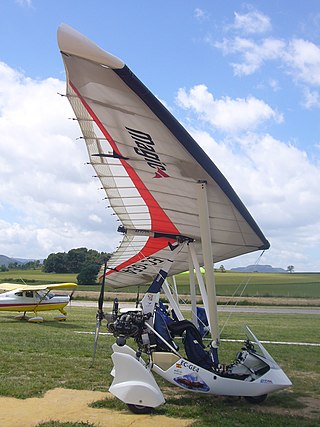
The DTA Combo is a French ultralight trike, designed by Dominique Corriera and produced by DTA sarl of Montélimar. The aircraft is supplied complete and ready-to-fly.

The Kalinin K-1, also known as RVZ-6, was a Soviet passenger plane that could carry three people.
















